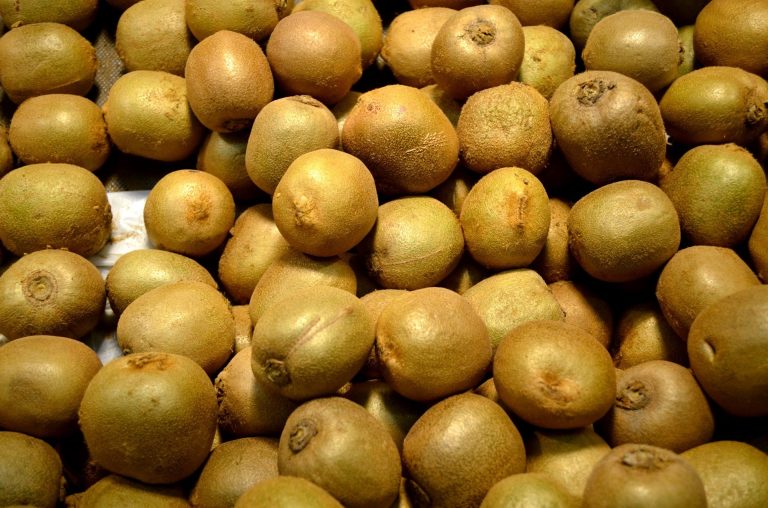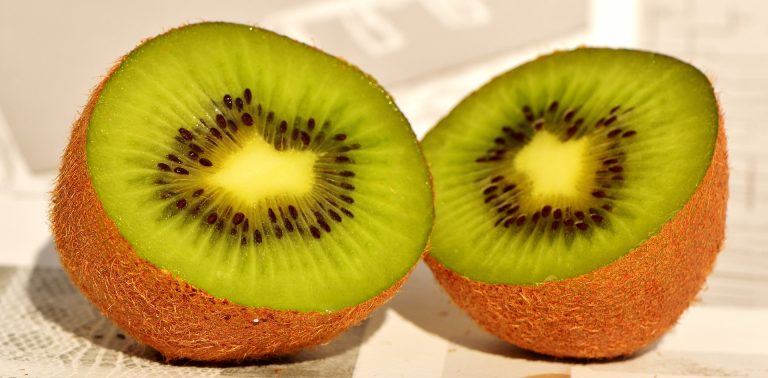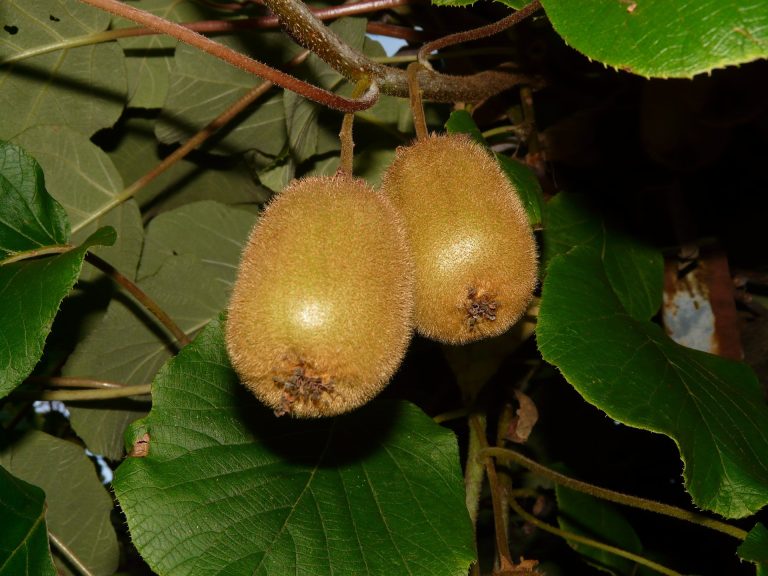Kiwi Fruit: From Chinese Origins to Global Superfood – Exploring Its Evolution, Health Benefits, and Culinary Versatility
Introduction
Kiwi fruit, scientifically known as Actinidia deliciosa, is a fascinating and delicious fruit with a rich history and significant nutritional benefits. Originally native to the rugged terrain of China’s Yangtze River Valley, kiwis have become a global sensation due to their distinctive appearance, tangy-sweet flavor, and versatile culinary uses. This article explores the comprehensive journey of kiwi fruit, from its ancient origins and cultivation practices to its modern applications in agriculture, nutrition, and health.
Historical Origins and Early Cultivation
The history of kiwi fruit traces back thousands of years to China, where it was initially known as the Chinese gooseberry. Indigenous to the mountainous regions of the Yangtze River Valley, wild kiwi vines thrived in the subtropical forests, producing small, edible fruits that were gathered by local inhabitants for both sustenance and traditional medicine. Chinese emperors in ancient times prized the fruit for its unique flavor and purported health benefits, leading to its cultivation in imperial gardens.
The cultivation of kiwi fruit as an agricultural crop began in earnest in the early 20th century, when seeds were brought to New Zealand by missionaries and horticulturists. Recognizing its commercial potential, New Zealand farmers experimented with different cultivation techniques and selected varieties that thrived in the country’s temperate climate. This marked the beginning of New Zealand’s dominance in the global kiwi fruit market, eventually leading to the fruit’s rebranding as “kiwifruit” to enhance its marketability and distinguish it from the gooseberry.

Botanical Characteristics and Varieties
Kiwi fruit belongs to the Actinidiaceae family and is characterized by its small, oval-shaped fruits with fuzzy brown skin and vibrant green flesh speckled with tiny black seeds. The most common variety of kiwi fruit is Actinidia deliciosa, known for its sweet and tart flavor profile. Over time, breeding efforts have led to the development of different cultivars with variations in size, shape, skin texture (smooth vs. fuzzy), and flesh color (green, gold).
In addition to the traditional green kiwi (Actinidia deliciosa), other commercially important varieties include:
- Gold Kiwifruit (Actinidia chinensis): Known for its smooth, bronze-colored skin and golden flesh. Gold kiwifruit tends to be sweeter and less tart than green kiwifruit, with a tropical flavor reminiscent of mango or pineapple.
- Red Kiwifruit (Actinidia arguta): Characterized by its smooth, red skin and vibrant red or pink flesh. Red kiwifruit has a sweeter taste compared to green kiwifruit and lacks the characteristic fuzziness of Actinidia deliciosa.
- Baby Kiwi (Actinidia arguta): Also known as hardy kiwi or kiwi berry, this smaller variety of kiwi fruit is about the size of a grape and is often eaten whole, including its thin, smooth skin.
Each variety offers unique flavor profiles and nutritional benefits, catering to different consumer preferences and culinary applications.
Nutritional Composition and Health Benefits
Kiwi fruit is celebrated not only for its delightful taste but also for its impressive nutritional profile. It is rich in essential vitamins, minerals, antioxidants, and dietary fiber, making it a valuable addition to a healthy diet. A typical serving of kiwi fruit (approximately 100 grams) provides the following nutrients:
- Vitamin C: Kiwi fruit is renowned for its exceptionally high vitamin C content, surpassing that of oranges. Vitamin C is good for immune function, healthy skin, and production of collagen.
- Vitamin K: Important for blood clotting and bone health.
- Vitamin E: An antioxidant that helps protect cells from damage.
- Potassium: Important for heart health and regulating blood pressure.
- Fiber: Both soluble and insoluble fiber found in kiwi fruit promotes digestive health and helps regulate blood sugar levels.
- Antioxidants: Including carotenoids (e.g., lutein, zeaxanthin) and flavonoids (e.g., quercetin), which have anti-inflammatory and antioxidant properties.
The combination of these nutrients contributes to various health benefits associated with kiwi fruit consumption, including improved immune function, reduced risk of chronic diseases such as heart disease and diabetes, and enhanced skin health.

Cultural Significance and Culinary Uses
Kiwi fruit’s popularity extends beyond its nutritional benefits to its culinary versatility and cultural significance. In addition to being enjoyed fresh as a snack or dessert, kiwi fruit is used in a wide range of culinary applications around the world. Some popular uses include:
- Fresh Consumption: Sliced kiwi fruit is commonly added to fruit salads, yogurt parfaits, and smoothies for its refreshing flavor and vibrant color.
- Desserts: Kiwi fruit is often used as a decorative topping on cakes, tarts, and pavlovas. Its tangy-sweet flavor provides a delightful contrast to creamy desserts.
- Savory Dishes: Kiwi fruit can be incorporated into savory dishes such as salads, salsas, and marinades. Its acidity and juiciness complement seafood, poultry, and grilled meats.
- Beverages: Kiwi fruit is juiced to make refreshing beverages, cocktails, and mocktails. Its juice is also used as a natural tenderizer for meat marinades.
In cultures where kiwi fruit is traditionally grown or imported, such as New Zealand, China, and Italy, it holds symbolic significance and is often celebrated in festivals and culinary events.
Commercial Cultivation and Agricultural Practices
The commercial cultivation of kiwi fruit requires specific growing conditions to ensure optimal yield and fruit quality. Kiwi vines are perennial woody plants that thrive in regions with temperate climates, adequate sunlight, and well-drained soil. Key aspects of kiwi fruit cultivation include:
- Propagation: Kiwi fruit is propagated vegetatively through cuttings or grafting onto rootstocks. This ensures genetic uniformity and promotes early fruiting.
- Training and Pruning: Kiwi vines require structural support, such as trellises or pergolas, to support their vigorous growth habit. Pruning is essential to manage vine vigor, promote fruit production, and maintain vine health.
- Pollination: Most kiwi fruit varieties are dioecious, meaning individual plants are either male or female. To ensure fruit set, growers often plant male and female vines in close proximity or use pollenizers to facilitate pollination.
- Harvesting and Post-Harvest Handling: Kiwi fruit is harvested when fully mature but still firm to touch. Depending on the variety, harvesting typically occurs in late summer to early autumn. Post-harvest practices include sorting, grading, and storage in cool, humid conditions to extend shelf life and maintain fruit quality.
Major kiwi fruit-producing countries include New Zealand, Italy, China, Chile, and Greece, which collectively supply kiwi fruit to global markets year-round.

Economic Impact and Global Trade
Kiwi fruit production contributes significantly to agricultural economies and international trade. New Zealand, known as the world’s leading kiwifruit exporter, cultivates predominantly green and gold kiwifruit varieties for global markets. Italy and China are also major producers, with Italy specializing in premium-quality kiwi fruit and China focusing on both domestic consumption and export.
The global trade in kiwi fruit is influenced by factors such as consumer demand for fresh, high-quality produce; import regulations; exchange rates; and seasonal variations in production. Kiwi fruit’s popularity as a nutritious and exotic fruit has contributed to its widespread consumption in North America, Europe, Asia, and increasingly in emerging markets.
Health Research and Nutritional Studies
Kiwi fruit’s nutritional benefits have sparked interest among researchers and health professionals, leading to numerous studies investigating its potential health-promoting properties. Key areas of research include:
- Immune Function: The high vitamin C content of kiwi fruit supports immune function and helps reduce the severity and duration of colds and respiratory infections.
- Digestive Health: Kiwi fruit’s fiber content promotes digestive health by supporting regular bowel movements and maintaining gut health.
- Heart Health: Potassium and other nutrients in kiwi fruit contribute to heart health by helping to regulate blood pressure and reduce the risk of cardiovascular disease.
- Antioxidant Effects: Antioxidants such as vitamin C, vitamin E, and flavonoids in kiwi fruit help protect cells from oxidative stress and inflammation, which are linked to aging and chronic diseases.
Ongoing research continues to explore the potential of kiwi fruit in managing chronic conditions such as diabetes, improving skin health, and supporting overall well-being.

Environmental Sustainability and Challenges
Kiwi fruit cultivation presents both environmental benefits and challenges. Sustainable practices are essential to minimize environmental impact and ensure long-term viability of kiwi fruit production. Key sustainability considerations include:
- Water Management: Efficient irrigation practices reduce water use and minimize impact on local water resources.
- Biodiversity Conservation: Preserving natural habitats and implementing biodiversity-friendly farming practices support ecosystem health and promote natural pest control.
- Soil Health: Crop rotation, cover cropping, and organic farming methods enhance soil fertility and reduce reliance on synthetic fertilizers.
- Integrated Pest Management (IPM): IPM strategies minimize pesticide use by monitoring pest populations and employing biological control methods.
Climate change poses challenges to kiwi fruit cultivation, including altered weather patterns, temperature fluctuations, and increased pest and disease pressure. Adaptation strategies such as varietal selection, water-efficient technologies, and climate-resilient farming practices are crucial to mitigating these challenges.
Technological Innovations and Future Trends
Advances in agricultural research and technology continue to drive innovation in kiwi fruit cultivation, post-harvest handling, and consumer preferences. Key technological innovations and future trends include:
- Genetic Improvement: Breeding programs focus on developing new kiwi fruit varieties with enhanced flavor, nutritional content, and disease resistance.
- Precision Agriculture: Digital farming technologies, including remote sensing, drones, and data analytics, optimize crop management practices and resource use efficiency.
- Post-Harvest Technologies: Innovations in packaging, storage technologies, and cold chain logistics extend shelf life, maintain fruit quality, and reduce food waste.
- Consumer Preferences: Increasing demand for organic and sustainably produced kiwi fruit, as well as convenience foods such as kiwi fruit snacks and smoothie packs.
- Nutraceuticals and Functional Foods: Research into kiwi fruit extracts and bioactive compounds for use in dietary supplements, functional foods, and cosmetic products.
As consumer awareness of health and sustainability grows, the kiwi fruit industry is poised to embrace these trends and capitalize on new market opportunities.
Conclusion
In conclusion, kiwi fruit stands out as a remarkable fruit with a storied past, global appeal, and significant health benefits. From its humble origins in ancient China to its widespread cultivation and consumption worldwide, kiwi fruit continues to captivate consumers with its unique flavor, vibrant appearance, and nutritional richness. As agricultural practices evolve and consumer preferences shift toward healthier and sustainable food choices, the future of kiwi fruit remains promising, supported by ongoing research, technological innovation, and a growing appreciation for its role in promoting health and well-being.

